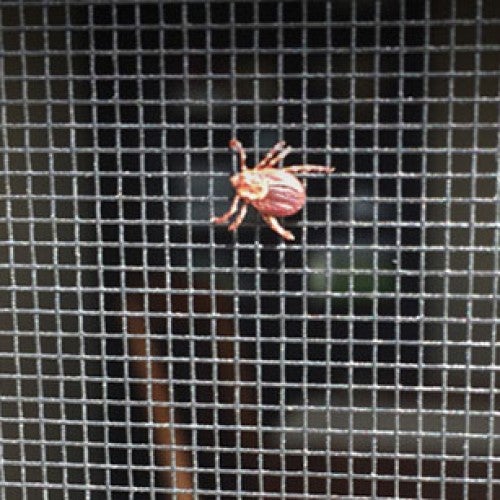I’m pretty sure no one wants to find a tick – either engorged or unfed — crawling across their floor or furniture. Even the TickGuy really doesn’t like finding loose and wandering ticks inside where they don’t belong and are just not expected. We’ve written previously about the difference between inside ticks and ticks inside and talked about some easy and effective solutions to loose and wandering ticks. It’s really important to correctly identify any ticks found in a home. Brown dog ticks (Rhipicephalus sanguineus), for example, actually thrive in indoor environments where there is easy access to blood meals, while most other types of ticks find the indoor environment too dry for long term survival. Tick prevention products for pets that exhibit quick tick-knockdown action can incapacitate loose and wandering ticks on pets to the point that those ticks are no longer a threat to other pets or unsuspecting humans. Similarly, wearing clothing pre-treated with permethrin can incapacitate ticks that latch on to people wearing those clothes.
In a previous blog, we’ve also addressed people’s concerns about bringing ticks inside on Christmas trees; the tick look-alikes coming from Christmas trees are really not ticks at all, but instead a type of insect called an aphid.
Still, we’re inundated with reports from people with tick bites who firmly proclaim their lack of outdoor exposure; these folks are left wondering and making sometimes-flawed assumptions about where their tick might have come from. That got me thinking about all of the possible ways ticks can and do get inside, and I started to make a list that I would welcome people to add to:
- Their out-and-in pets carry loose and wandering ticks inside; –that’s probably the most common way. Followed closely by:
- out-and-in kids, husbands, wives, partners…you get the idea; –ticks riding inside on shoes and clothing worn when outside in tick habitat.
- on gear that’s been outside like backpacks, bags, or blankets;
- on exotic pets, especially reptiles, coming from breeding facilities.
Some people are afraid that they bring ticks inside on their firewood. It’s possible, I suppose, but probably ranks lower down on the list of ways ticks get inside. Spiders and other wood-loving beetles maybe, but ticks, not so much.
I once live-captured a mouse in an upstairs closet that had a 3-day engorged nymph tick attached to it. While that tick wasn’t a risk to anyone inside (because it already had its blood meal from the mouse), it was still kind of a surprise. I’ve always thought that the mice I caught in the house were mostly adapted to indoor life. This one was either an “in-out-in” mouse, or a very recent transplant from outside.

There are probably even rare times that ticks just make it inside on their own eight legs. American dog ticks, in particular, are attracted to the heat and carbon dioxide emanating from houses, and are sometimes encountered en masse literally climbing the outside walls and screened windows probing for a way indoors. This scenario is generally encountered mostly in the spring, when hungry adult American dog ticks have recently emerged.
No doubt, there are other ways ticks make it indoors, and I sincerely invite you to send us your indoor tick encounter experiences. But one thing we’ve learned by listening to thousands of people sharing their tick encounter experiences is how commonly people underestimate how long a tick has been attached. When they find an attached tick, they may believe it couldn’t have been attached since they had last been outdoors in tick habitat. A common scenario is a self-report of hiking on Saturday but finding the tick on Tuesday or Wednesday, and their being “certain that [they] would have seen the tick” had it really been attached that long. Well, surprise!! Ticks masterfully go unnoticed thanks in part to their tiny size, and compounds in their saliva that prevent pain as they bite and feed.
The next time you find a tick, we encourage you to take a look at our tick growth comparison chart to get a better estimate of just how long that tick was likely attached. It may help you pinpoint the source of your tick encounter so that you’re better protected the next time you go to the same or similar places.
